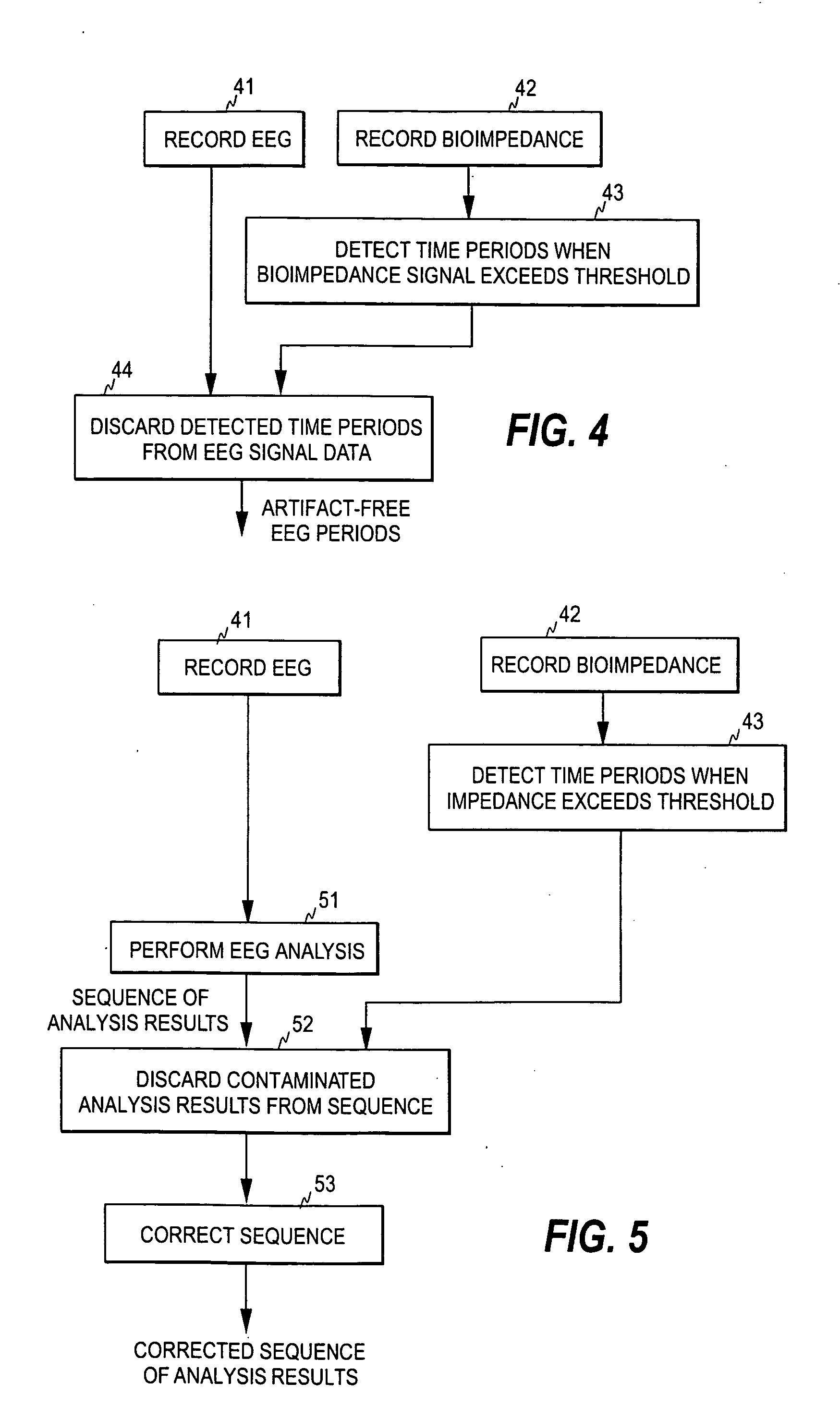Detection of artifacts in bioelectric signals
- Summary
- Abstract
- Description
- Claims
- Application Information
AI Technical Summary
Benefits of technology
Problems solved by technology
Method used
Image
Examples
Embodiment Construction
[0036] As discussed above, the present invention rests on the discovery that the major low-frequency interference sources hampering the analysis of an EEG signal measured from the forehead of the patient are such that their presence may be identified from a bioimpedance signal measured from the forehead of the patient. Therefore, a simultaneous bioimpedance measurement indicates when an EEG signal is likely to be distorted by one or more of the said interference sources.
[0037] Bio-impedance measurement combined with biopotential measurement is applied in monitoring of the respiration of a patient, for example. U.S. Pat. No. 5,879,308 discloses a method for measuring bioimpedance in connection with an ECG measurement for monitoring the respiration and / or the blood circulation of the patient. In the bioimpedance measurement, an excitation signal is supplied from a signal generator to the active electrodes of the ECG measurement, whereby an impedance signal indicative of the impedance...
PUM
 Login to View More
Login to View More Abstract
Description
Claims
Application Information
 Login to View More
Login to View More - R&D
- Intellectual Property
- Life Sciences
- Materials
- Tech Scout
- Unparalleled Data Quality
- Higher Quality Content
- 60% Fewer Hallucinations
Browse by: Latest US Patents, China's latest patents, Technical Efficacy Thesaurus, Application Domain, Technology Topic, Popular Technical Reports.
© 2025 PatSnap. All rights reserved.Legal|Privacy policy|Modern Slavery Act Transparency Statement|Sitemap|About US| Contact US: help@patsnap.com



